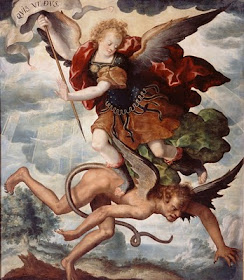Because of its wide application, the meaning of the word "paganism" is liable to be stretched and rendered almost meaningless. The definitions given in dictionaries tend to reflect rather than resolve the resultant confusion. Because of this it is essential that we have a clear definition of what paganism is.
I would define it as religions, supernatural beliefs, and symbolic systems that are rooted in the lives, landscapes, and histories of particular peoples. This distinguishes it from rootless international globalized religions, supernatural beliefs, and symbolic systems; in particular the one-size-fits-all spiritual totalitarianism inherent in the proselytizing religions of Christianity, Islam, and Buddhism.
This definition also distinguishes it from such rootless internationally traded cultural commodities as Satanism, the occult, New Age mumbo-jumbo, and indeed any 'pagan' belief system transplanted wholesale from its native soil halfway round the world to a spiritual vacuum elsewhere.
In this context, the etymology of the word pagan is revealing. Not surprisingly, given the Christian-dominated background of European languages, pagan was originally meant as an insult. It comes from "paganus," meaning "villager, rustic, civilian," which in turn comes from "pagus," meaning "rural district." "Pagus" itself comes from "pangere," which means "to fix, fasten," and derives from "pag" (to fix), which is also the root of "pact."
In this, we can see paganism's clear connection with location and social obligation, rather than with the rootless amoral masses, gathered as slaves and immigrants, in the vast metropolii of the Roman Empire, a population, which, deprived of cultural and religious identity, provided many easy converts to the great universal religion.









